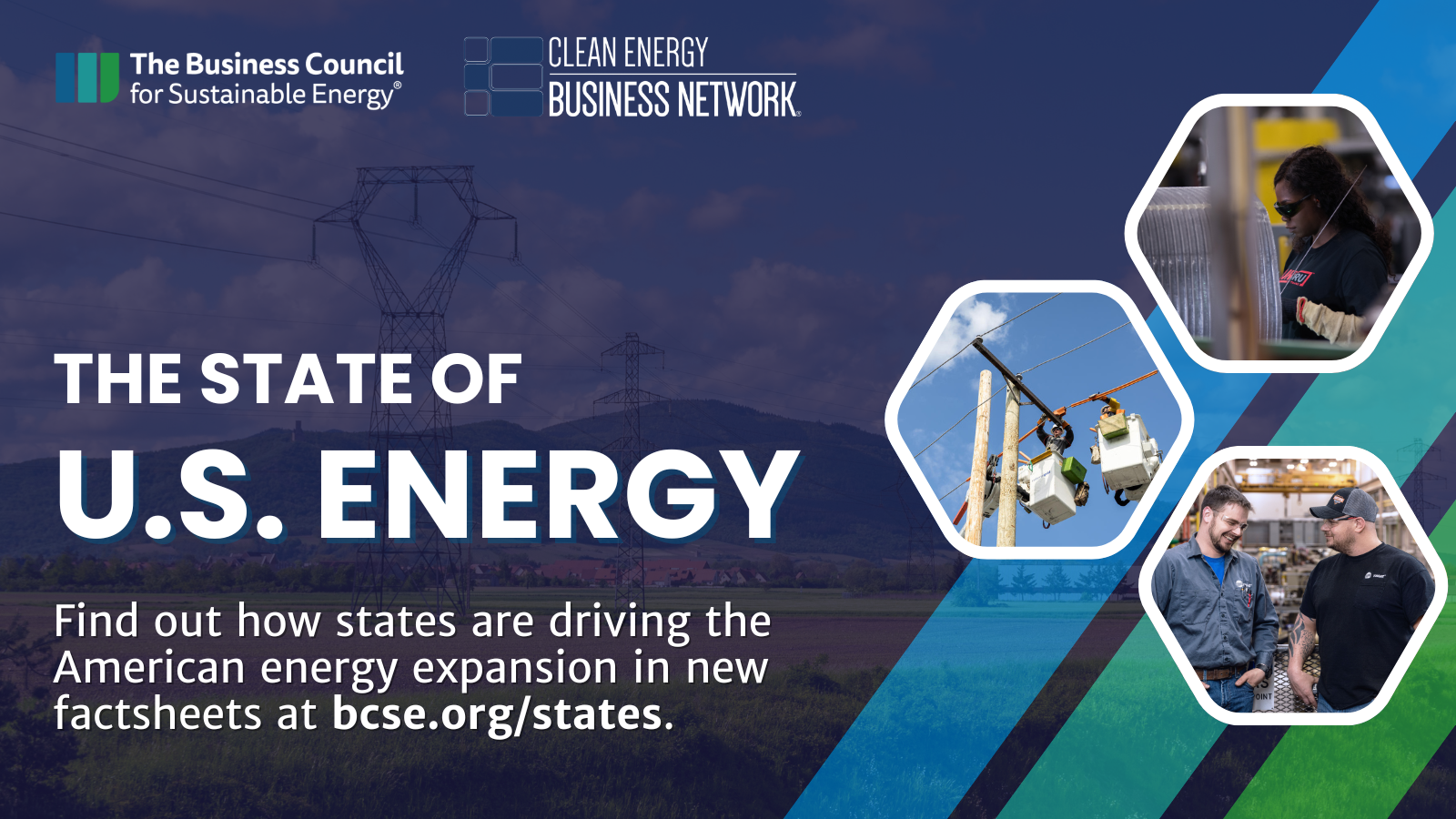Washington, D.C. – As industry leaders and energy consumers celebrate National Clean Energy Week, new factsheets detail how key states’ investments in a broad portfolio of energy solutions are available to help meet skyrocketing demand growth and keep energy costs low for consumers.
The State of U.S. Energy, released today by the Business Council for Sustainable Energy (BCSE) and the Clean Energy Business Network (CEBN), provides a current view of the benefits of energy investment in 14 states, from job growth to rural land lease payments. Plus, local case studies from leading U.S. companies demonstrate how energy businesses are delivering for states now – improving energy efficiency, maintaining grid reliability, and breaking new ground on generation projects.
“Now is the time for states to take the lead on investing in energy solutions that meet increasing demand and lower energy costs for their constituents,” said BCSE President Lisa Jacobson. “The State of U.S. Energy reveals that key states are already meeting the moment. From building efficiency retrofits in Utah to wind farms in Minnesota to cutting-edge natural gas research in Texas, we can see these investments strengthening America’s future and creating more than 3 million jobs.”
The State of U.S. Energy includes factsheets for Kansas, Louisiana, Massachusetts, Michigan, Minnesota, North Carolina, New Jersey, New York, Pennsylvania, South Carolina, Tennessee, Texas, Utah, and West Virginia. In addition to highlighting private sector projects and investments, these factsheets compile data from the 2025 Sustainable Energy in America Factbook, as well as the most recent data from the U.S. Energy Information Administration, the U.S. Department of Energy, and more.
“The State of U.S. Energy shows that communities across the United States are benefiting from deploying a broad portfolio of energy solutions – including energy efficiency, new capacity, and grid modernization,” said Lynn Abramson, President of the Clean Energy Business Network. “Now is the time to double down on investments in energy infrastructure to lower costs for Americans, strengthen resilience, and power jobs across the country.”
Alongside the state facts and case studies, BCSE and CEBN provide policy recommendations for Congressional and state offices to lower energy costs and ensure competitive state leadership, including:
- Expanding and modernizing the electric grid and energy infrastructure, to support integration of new and flexible energy resources.
- Reforming and expanding capacity for permitting and siting processes at all levels to enable the build-out of efficient energy infrastructure and buildings.
- Funding research, development, demonstration, and deployment (RDD&D) of energy and carbon management technologies, to support state innovation in these expanding markets.
- Employing market-based tools, like tax policy, that create signals to invest and that leverage private sector dollars.
Download The State of U.S. Energy factsheets today at bcse.org/states.
Media Contacts:
Andy Barnes
Clean Energy Business Network
abarnes@cebn.org
202-785-0507 ext. 1503
Lizzie Stricklin
Business Council for Sustainable Energy
lstricklin@bcse.org
202.785.0507 ext. 1504

